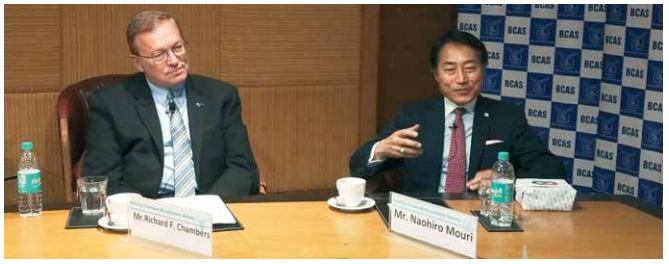“(a) Whether on the facts and in the circumstances of the
case, the Tribunal was justified in holding that the exemption u/s.10A of the
Act should be computed after excluding freight and insurance from the total
turnover ?
(b) Whether on the facts and in the circumstances of the
case, the Tribunal was justified in directing the Assessing Officer to grant
exemption u/s.10A on foreign exchange gain earned on realisation of export
receipts in the year of export and to exclude the gains on sales of earlier
years from the profits of the year under consideration and allow in those
years ?
(c) Whether on the facts and in the circumstances of the
case, the Tribunal was justified in directing the Assessing Officer to grant
the exemption u/s.10A of the Act on the assessed income, which was enhanced
due to disallowance of employer’s as well as employees’ contribution towards
PF/ESIC ?”
The Bombay High Court upheld the decision of the Tribunal,
answered the questions in favour of the assessee and held as under :
“(a-i) Ss.(4) of S. 10A provides the manner in which the
profits derived from the export shall be computed. U/ss.(4), the profits of
the business of the undertaking are multiplied by the export turnover and
divided by the total turnover of the business carried on by the undertaking.
Total turnover of the business would consist of the turnover from export and
the turnover from local sales.
(a-ii) In Explanation (2) to S. 10A, the expression ‘export
turnover’ is defined to mean the consideration in respect of export of
articles, etc., received in or brought into India by the assessee in
convertible foreign exchange but so as not to include inter alia freight and
insurance. Therefore in computing the export turnover, the Legislature has
made a specific exclusion of freight and insurance charges.
(a-iii) The export turnover in the numerator must have the
same meaning as the export turnover which is a constituent element of total
turnover in the denominator. Freight and insurance do not have an element of
turnover. These two items would have to be excluded from the total turnover.
(b-i) The Tribunal has followed a decision of its Special
Bench in coming to the conclusion that foreign exchange earned on the
realisation of export receipts in a year other than the year in which the
goods were exported would have to be considered in the year of export for the
for the purposes of exemption u/s.80HHC. The Tribunal has, however, directed
the Assessing Officer, while granting a deduction to the assessee u/s.10A in
the export to exclude the amount from the profits of the year under
consideration simultaneously. This is to ensure that the assessee does not
obtain a deduction twice over.
(b-ii) It has not been disputed on behalf of the Revenue
that the foreign exchange was realised by the assessee within the period
stipulated in law. The assessee realised a larger amount because of a foreign
exchange fluctuation. The fact that this forms part of the sale proceeds would
have to be accepted in view of the judgment of the Division Bench of this
Court in CIT v. Umber Export India, (ITA 1249 of 2007 decided on 18-2-2009).
(biii) In the present case, the assessee has realised a
larger amount in terms of Indian Rupees as a result of a foreign exchange
fluctuation that took place in the course of the export transaction.
(b-iv) For the aforesaid reasons, the question of law is
answered against the Revenue and in favour of the assesee.
(c-i) The assessed income was enhanced due to the
disallowance of the employer’s as well as employees’ contribution towards PF/ESIC
and the only question which is canvassed on behalf of the Revenue is whether
on that basis the Tribunal was justified in directing the Assessing Officer to
grant the exemption u/s.10A.
(c-ii) On this position, in the present case it can-not be
disputed that the net consequence of the disallowance of the employer’s and
the employees’ contribution is that the business profits have to that extent
been enhanced. There was an add back by the Assessing Officer to the income.
All profits of the unit of the assessee have been derived from manufacturing
activity. The salaries paid by the assessee relate to the manufacturing
activity. The disallowance of the PF/ESIC payments has been made because of
the statutory provisions. The plain consequence of the disallowance and the
add back that has been made by the Assessing Officer is an increase in the
business profits of the assessee.
(c-iii) The contention of the Revenue that in computing the
deduction u/s.10A the addition made on account of the disallowance of PF/ESIC
payments ought to be ignored cannot be accepted. No statutory provision to
that effect having been made, the plain consequence of the disallowance made
by the Assessing Officer must follow. The question shall accordingly stand
answered against the Revenue and in favour of the assessee.”









